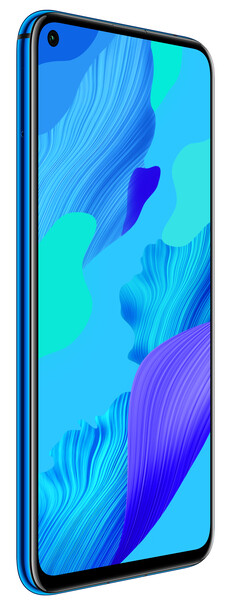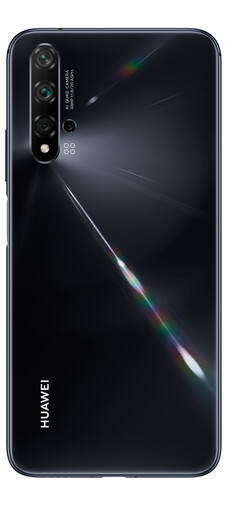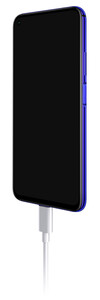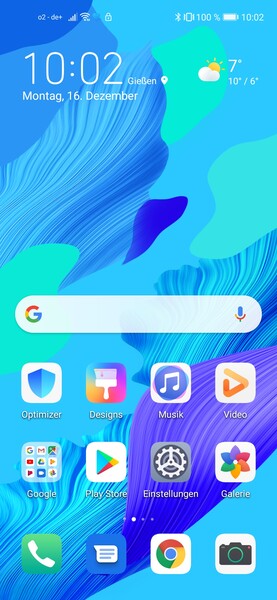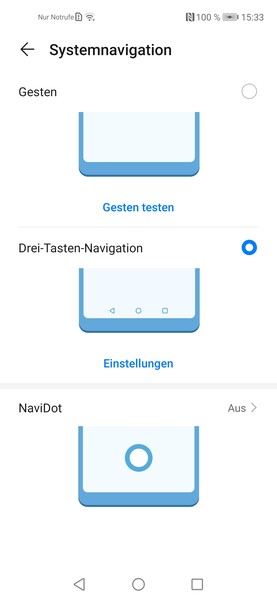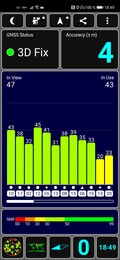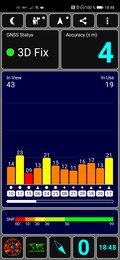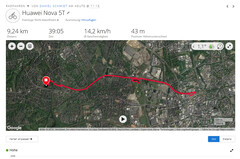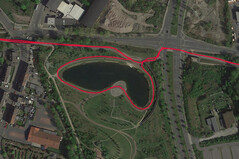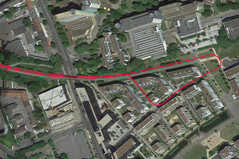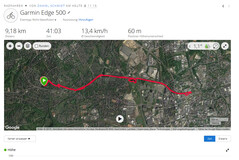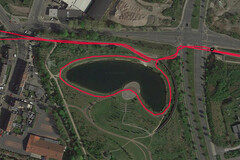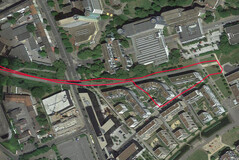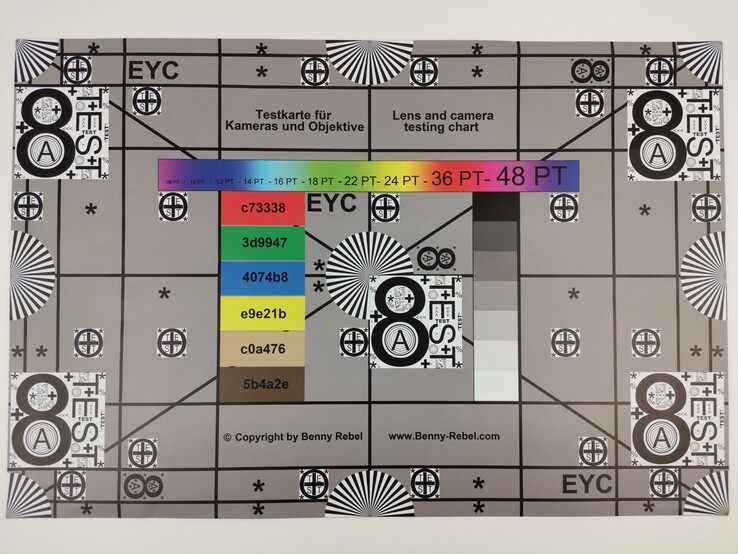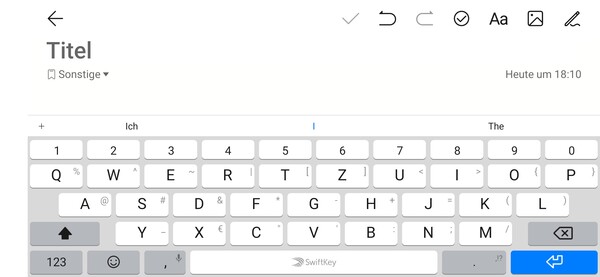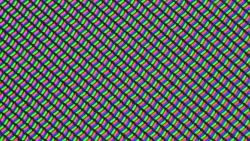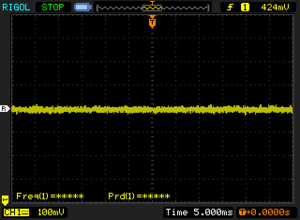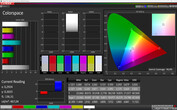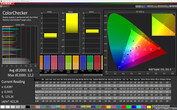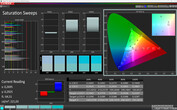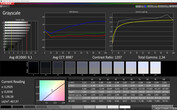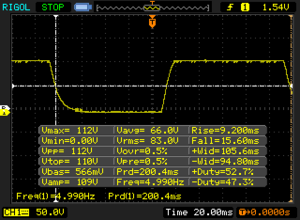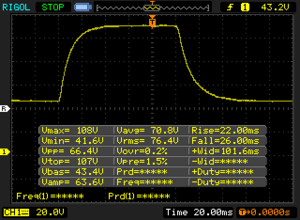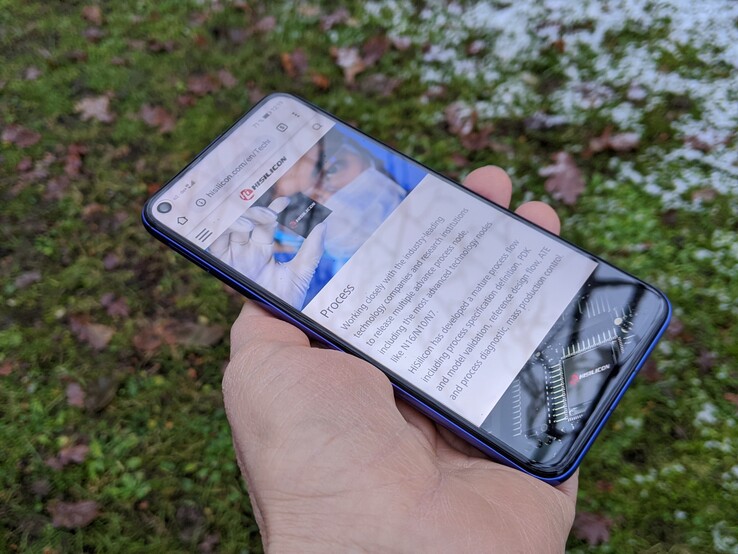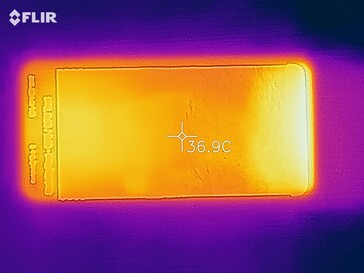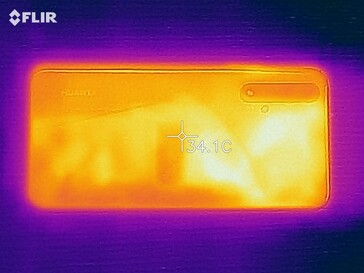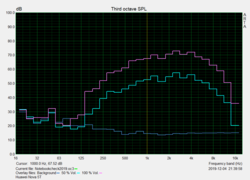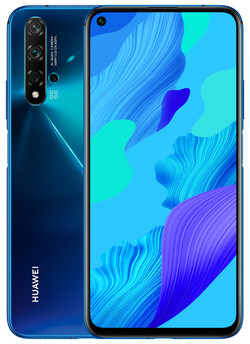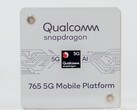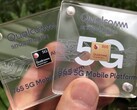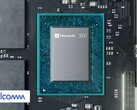Huawei Nova 5T Smartphone Review – Honor Clone With Improvements
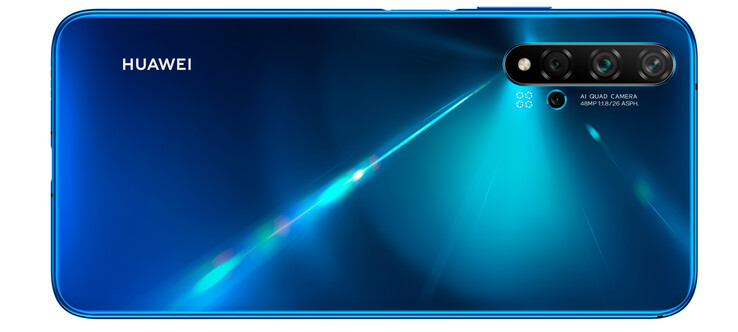
The logo looks different and is in a different place, but otherwise, the looks are almost identical, including the arrangement of the camera and fingerprint scanner. The Kirin 980, 6 GB of RAM and 128 GB of internal storage for data, neither of which can be expanded: it is also identical here, and 3DMark even lists the Nova as Honor 20 in one benchmark. However, there are still some small differences, and Huawei has made some improvements particularly in the mobile communications. Of course, the Honor 20 will also accompany us in the Huawei test, as are three other possible alternatives: the Google Pixel 3a, the Samsung Galaxy A80, and the Mi 9 from Xiaomi.
By the way, there was never a "Nova 4," since the number 4 has a negative connotation for the Chinese - we already know this from the OnePlus.
Comparison Devices
Rating | Date | Model | Weight | Drive | Size | Resolution | Price |
|---|---|---|---|---|---|---|---|
| 84.2 % v7 (old) | 12 / 2019 | Huawei Nova 5T Kirin 980, Mali-G76 MP10 | 174 g | 128 GB UFS 2.1 Flash | 6.26" | 2340x1080 | |
| 89.4 % v6 (old) | 08 / 2019 | Honor 20 Kirin 980, Mali-G76 MP10 | 174 g | 128 GB UFS 2.1 Flash | 6.26" | 2340x1080 | |
| 80.2 % v7 (old) | 07 / 2019 | Google Pixel 3a SD 670, Adreno 616 | 147 g | 64 GB eMMC Flash | 5.60" | 2220x1080 | |
| 87.2 % v6 (old) | 07 / 2019 | Samsung Galaxy A80 SD 730, Adreno 618 | 220 g | 128 GB UFS 2.1 Flash | 6.70" | 2400x1080 | |
| 86.2 % v7 (old) | 03 / 2019 | Xiaomi Mi 9 SD 855, Adreno 640 | 173 g | 64 GB UFS 2.1 Flash | 6.39" | 2340x1080 |
Case – The Nova 5T looks good with a lot of glass
The pretty Nova is smooth, with a case of shimmering glass that also makes the back look elegant. The camera sticks out considerably from the case, making the smartphone wobble when you try to operate it while it is lying on a table. The front camera is unobtrusive, only needing a small round inset in the display.
The fingerprint scanner sits on the side of the frame. We have seen this before in Chinese tablets. In the Huawei smartphone, this is unusual, but can be operated comfortably. The sensor can be pressed and also serves as the standby key. An infrared sensor on top, a mono speaker, and a USB-C port at the bottom of the case complete the visible equipment.
Equipment – A fast SoC and a lot of RAM
The equipment inside is also impressive: With the Kirin 980, Huawei uses a high-quality SoC from its own brand, HiSilicon, which gets 6 GB of RAM to run. While the storage is not expandable, it is sufficiently large with 128 GB. The USB-C port still uses the 2.0 standard and is thus unable to support the faster transfer rates. There is a USB-C headset for audio listening, and an adapter for standard headsets that use a 3.5-mm plug is also included.
Software – A Huawei that still has Google Services
Our test unit was still delivered with Android 9. However, Android 10 is available for the Nova 5T and was installed together with the corresponding EMUI 10 user interface and the Android security patch from October 6. In addition to the Google services we have already mentioned, several bloatware apps are also installed, but you can uninstall them.
Communication and GPS – Improvements compared to the Honor 20
It is surprising when Huawei does not score in the network communication area. Not only are routers one of the business segments of the company, but this is also where its roots are. Using our Linksys EA8500 reference router, the Nova 5T and Honor 20 only reach less than 350 Mbps, even in the download. The similar drop for both devices at the beginning of the transfer also stands out.
In the mobile communication, the Nova 5T improves on a shortfall of the Honor 20, which only supported two bands respectively in the GSM and UMTS network. The Huawei also scores with a high coverage in the LTE net.
| Networking | |
| iperf3 transmit AX12 | |
| Google Pixel 3a | |
| Xiaomi Mi 9 | |
| Huawei Nova 5T | |
| Honor 20 | |
| Samsung Galaxy A80 | |
| iperf3 receive AX12 | |
| Xiaomi Mi 9 | |
| Google Pixel 3a | |
| Samsung Galaxy A80 | |
| Huawei Nova 5T | |
| Honor 20 | |
The GPS receiver works fast and is able to quickly find a sufficient amount of signals already indoors. The locating is already fairly accurate in here, so that when you go outside, there is only an improvement in the signal strength. The "GPS Test" app recognizes signals from the GPS, GLONASS, Galileo, and Beidou satellite systems.
During a bike tour, where we also take the Edge 500 professional navigation device from Garmin, the recording of the route is almost exemplary in the Huawei. Even in places where the professional device runs into some trouble, such as when it cuts off the corner of a house in a residential area, the smartphone remains on track.
Phone Functions and Voice Quality
Huawei uses its own phone interface with additional features such as quick-dial and voice control. The quality of the voice transfer is good in both directions. In addition, the Nova 5T supports VoLTE and VoWIFI, which had not been possible with at least our test unit of the Honor 20.
Cameras – The Nova 5T comes in behind Samsung and Google
The camera makes a strong impression on paper: Under bad light conditions, the f/1.8 aperture of the AI-supported 48-MP main camera is supposed to let in as much light as possible. It is accompanied by a 2-MP sensor for portraits and close-ups, and an additional sensor for the Bokeh effect. A lens on top with a short focal distance allows you to take wide-angle shots. With 32 MP, the selfie camera also has a high resolution, and having an aperture of f/2.0 also makes it relatively light sensitive for a front camera. However, the portrait function is reduced to a filter with a selected image section that is calculated afterwards into the picture.
We compare the camera with a professional camera and the Google Pixel 4 and iPhone7 11 Pro smartphones. The pictures from those are sharper in all three scenes, but the detail enlargements are also noisy in the dark. Huawei reduces the image noise to the detriment of the sharpness. This is advantageous for recordings with little light, but in the portrait of the teddy bear, it leads to washed out spots in the fur. In the city picture, the reflections on the car roofs also turn out worse than those from the Apple and Google phones.
The Nova 5T reproduces the colors of the ColorChecker Passport image slightly lighter, but without any color tint worth mentioning. Under controlled light conditions, we also evaluate the sharpness and detail levels. In the center of the test image, all the details are reproduced sharply. However, towards the side and bottom edges, the contrast and sharpness decrease noticeably.
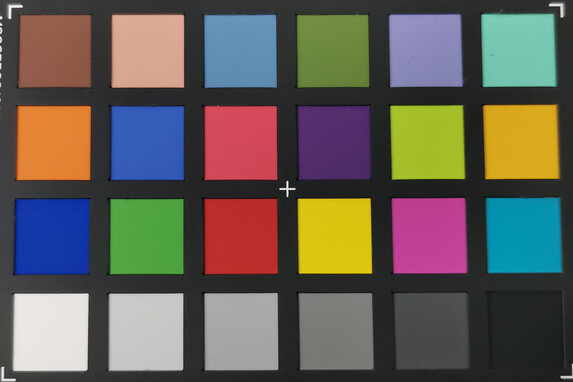
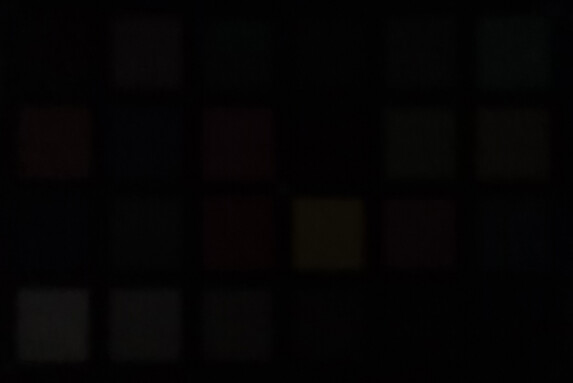
Accessories and Warranty
In addition to the charger, USB-C cable, SIM tool, and technical documents, there are also a headset and an additional adapter for a headset with a standard 3.5-mm audio plug.
The warranty period is 24 months.
Input Devices and Operation
The Nova can be unlocked by bio-metric methods using the face or fingerprints. Both methods respond exceptionally fast in the test. SwiftKey is installed as the standard keyboard. This is a keyboard app that is older than Google's GBoard and has been proven for many years. However, SwiftKey is unable to produce the mini stickers that you can create from a selfie with Google since 2018 and also on the iPhone. If you need those, you have to install GBoard.
Display – Differences compared to the Honor
Thanks to Widevine Level 1 certification, content from Amazon, Netflix, and so forth is also displayed in high resolution on the 19.5:9 screen. The ITPS display offers a good average brightness, but not in all areas of the screen. The brightness distribution of the Honor 20 presented itself significantly more even. On the other hand, the contrast, which results from good brightness and a low black value, is better in the Nova 5T.
| |||||||||||||||||||||||||
Brightness Distribution: 86 %
Center on Battery: 524 cd/m²
Contrast: 1344:1 (Black: 0.39 cd/m²)
ΔE ColorChecker Calman: 6.6 | ∀{0.5-29.43 Ø4.78}
ΔE Greyscale Calman: 9.1 | ∀{0.09-98 Ø5}
99.9% sRGB (Calman 2D)
Gamma: 2.34
CCT: 8987 K
| Huawei Nova 5T LTPS, 2340x1080, 6.3" | Honor 20 IPS, 2340x1080, 6.3" | Google Pixel 3a P-OLED, 2220x1080, 5.6" | Samsung Galaxy A80 AMOLED, 2400x1080, 6.7" | Xiaomi Mi 9 AMOLED, 2340x1080, 6.4" | |
|---|---|---|---|---|---|
| Screen | 22% | 14% | 24% | 49% | |
| Brightness middle (cd/m²) | 524 | 481 -8% | 403 -23% | 478 -9% | 593 13% |
| Brightness (cd/m²) | 510 | 481 -6% | 411 -19% | 486 -5% | 587 15% |
| Brightness Distribution (%) | 86 | 95 10% | 96 12% | 96 12% | 94 9% |
| Black Level * (cd/m²) | 0.39 | 0.55 -41% | |||
| Contrast (:1) | 1344 | 875 -35% | |||
| Colorchecker dE 2000 * | 6.6 | 1.1 83% | 5.1 23% | 2.97 55% | 0.9 86% |
| Colorchecker dE 2000 max. * | 12.2 | 2.1 83% | 11 10% | 10.18 17% | 2 84% |
| Greyscale dE 2000 * | 9.1 | 1.3 86% | 2 78% | 2.5 73% | 1.5 84% |
| Gamma | 2.34 94% | 2.12 104% | 2.22 99% | 2.031 108% | 2.27 97% |
| CCT | 8987 72% | 6442 101% | 6589 99% | 6533 99% | 6548 99% |
* ... smaller is better
Screen Flickering / PWM (Pulse-Width Modulation)
| Screen flickering / PWM not detected | |||
In comparison: 53 % of all tested devices do not use PWM to dim the display. If PWM was detected, an average of 8118 (minimum: 5 - maximum: 343500) Hz was measured. | |||
The high color temperature of just barely below 9000 K indicates a cool color reproduction. This is also confirmed by the Delta-E value of 6.6, measured by the spectral photometer and the CalMAN software. Only if the value remains below 5, the color tint is hardly noticeable.
Display Response Times
| ↔ Response Time Black to White | ||
|---|---|---|
| 24.8 ms ... rise ↗ and fall ↘ combined | ↗ 9.2 ms rise | |
| ↘ 15.6 ms fall | ||
| The screen shows good response rates in our tests, but may be too slow for competitive gamers. In comparison, all tested devices range from 0.1 (minimum) to 240 (maximum) ms. » 57 % of all devices are better. This means that the measured response time is worse than the average of all tested devices (20.2 ms). | ||
| ↔ Response Time 50% Grey to 80% Grey | ||
| 48 ms ... rise ↗ and fall ↘ combined | ↗ 22 ms rise | |
| ↘ 26 ms fall | ||
| The screen shows slow response rates in our tests and will be unsatisfactory for gamers. In comparison, all tested devices range from 0.165 (minimum) to 636 (maximum) ms. » 82 % of all devices are better. This means that the measured response time is worse than the average of all tested devices (31.6 ms). | ||
Performance – Very good, but not top values
In the higher mid-range, Huawei often uses its hi-end SoCs from the previous year. In 2018, the Kirin 980 with dual-NPU gave wings to the Mate 20 and it also ran in the P30 from spring of 2019. Qualcomm's mid-range SoC in the Galaxy A80 and the Pixel 3a is unable to keep up with it. On the other hand, the Snapdragon 855 in Xiaomi's Mi 9 does not leave the lead to the HiSilicon Soc uncontested. Particularly in the graphical benchmarks, the Mali-G76 comes up short against the Adreno 640 several times.
The benchmark comparison between the Nova 5T and Honor 20 shows the effect of activating the performance mode. Both use the same SoC and 6 GB of RAM. While in the test, the Honor 20 performance was not measured in the performance mode, that of the Nova 5T on the other hand, was using performance mode.
| PCMark for Android | |
| Work performance score (sort by value) | |
| Huawei Nova 5T | |
| Honor 20 | |
| Google Pixel 3a | |
| Samsung Galaxy A80 | |
| Xiaomi Mi 9 | |
| Average HiSilicon Kirin 980 (9728 - 13531, n=10) | |
| Work 2.0 performance score (sort by value) | |
| Huawei Nova 5T | |
| Honor 20 | |
| Google Pixel 3a | |
| Samsung Galaxy A80 | |
| Xiaomi Mi 9 | |
| Average HiSilicon Kirin 980 (7567 - 9326, n=10) | |
| GFXBench 3.0 | |
| on screen Manhattan Onscreen OGL (sort by value) | |
| Huawei Nova 5T | |
| Honor 20 | |
| Google Pixel 3a | |
| Samsung Galaxy A80 | |
| Xiaomi Mi 9 | |
| Average HiSilicon Kirin 980 (37 - 60, n=10) | |
| Average of class Smartphone (18 - 166, n=158, last 2 years) | |
| 1920x1080 1080p Manhattan Offscreen (sort by value) | |
| Huawei Nova 5T | |
| Honor 20 | |
| Google Pixel 3a | |
| Samsung Galaxy A80 | |
| Xiaomi Mi 9 | |
| Average HiSilicon Kirin 980 (40 - 91, n=10) | |
| Average of class Smartphone (12 - 606, n=157, last 2 years) | |
| GFXBench 3.1 | |
| on screen Manhattan ES 3.1 Onscreen (sort by value) | |
| Huawei Nova 5T | |
| Honor 20 | |
| Google Pixel 3a | |
| Samsung Galaxy A80 | |
| Xiaomi Mi 9 | |
| Average HiSilicon Kirin 980 (24 - 54, n=10) | |
| Average of class Smartphone (11 - 166, n=158, last 2 years) | |
| 1920x1080 Manhattan ES 3.1 Offscreen (sort by value) | |
| Huawei Nova 5T | |
| Honor 20 | |
| Google Pixel 3a | |
| Samsung Galaxy A80 | |
| Xiaomi Mi 9 | |
| Average HiSilicon Kirin 980 (25 - 56, n=10) | |
| Average of class Smartphone (8.4 - 413, n=157, last 2 years) | |
| AnTuTu v7 - Total Score (sort by value) | |
| Huawei Nova 5T | |
| Honor 20 | |
| Google Pixel 3a | |
| Samsung Galaxy A80 | |
| Xiaomi Mi 9 | |
| Average HiSilicon Kirin 980 (268359 - 322616, n=10) | |
| AnTuTu v6 - Total Score (sort by value) | |
| Honor 20 | |
| Google Pixel 3a | |
| Samsung Galaxy A80 | |
| Xiaomi Mi 9 | |
| Average HiSilicon Kirin 980 (245662 - 254229, n=9) | |
| AnTuTu v8 - Total Score (sort by value) | |
| Huawei Nova 5T | |
| Xiaomi Mi 9 | |
| Average HiSilicon Kirin 980 (410820 - 417287, n=2) | |
Qualcomm's Snapdragon 855 wins in all three browser benchmarks. However, the Nova 5T also does a good job here, and also shows itself to be fast in practice.
| Jetstream 2 - 2.0 Total Score | |
| Average of class Smartphone (23.8 - 387, n=153, last 2 years) | |
| Xiaomi Mi 9 (Chrome 73) | |
| Average HiSilicon Kirin 980 (48.4 - 60.9, n=6) | |
| Honor 20 (Chrome 75) | |
| Samsung Galaxy A80 (Chrome 75) | |
| Google Pixel 3a | |
| JetStream 1.1 - Total Score | |
| Xiaomi Mi 9 (Chrome 73.0.3683.75) | |
| Huawei Nova 5T (Chrome 74) | |
| Average HiSilicon Kirin 980 (93.2 - 109.9, n=9) | |
| Honor 20 (Chrome 75) | |
| Samsung Galaxy A80 (Chrome 75) | |
| Speedometer 2.0 - Result 2.0 | |
| Average of class Smartphone (15.2 - 643, n=128, last 2 years) | |
| Xiaomi Mi 9 (Chrome 73.0.3683.75) | |
| Average HiSilicon Kirin 980 (58.3 - 67.8, n=6) | |
| Honor 20 (Chrome 75) | |
| Samsung Galaxy A80 (Chome 75) | |
| WebXPRT 3 - Overall | |
| Average of class Smartphone (38 - 380, n=35, last 2 years) | |
| Huawei Nova 5T (Chrome 74) | |
| Xiaomi Mi 9 (Chrome 73.0.3683.75) | |
| Average HiSilicon Kirin 980 (86 - 124, n=10) | |
| Honor 20 (Chrome 75) | |
| Samsung Galaxy A80 (Chrome 75) | |
| Octane V2 - Total Score | |
| Average of class Smartphone (2228 - 121337, n=200, last 2 years) | |
| Xiaomi Mi 9 (Chrome 73.0.3683.75) | |
| Huawei Nova 5T (Chrome 74) | |
| Average HiSilicon Kirin 980 (20618 - 23285, n=10) | |
| Honor 20 (Chrome 75) | |
| Samsung Galaxy A80 (Chrome 75) | |
| Google Pixel 3a | |
| Mozilla Kraken 1.1 - Total | |
| Google Pixel 3a | |
| Honor 20 (Chrome 75) | |
| Samsung Galaxy A80 (Chrome 75) | |
| Average HiSilicon Kirin 980 (1948 - 3098, n=10) | |
| Huawei Nova 5T (Chrome 74) | |
| Xiaomi Mi 9 (Chrome 73.0.3683.75) | |
| Average of class Smartphone (257 - 28190, n=155, last 2 years) | |
* ... smaller is better
In none of the smartphones in the test, the storage can be expanded. Considering this in connection with the available image sizes of the highly resolving camera, less than the actual 128 GB would be insufficient, but this amount is okay. While the ranking when reading from or writing to the storage turns out a mixed bag, overall the Nova 5T delivered good access rates in the class comparison.
| Huawei Nova 5T | Honor 20 | Google Pixel 3a | Samsung Galaxy A80 | Xiaomi Mi 9 | Average 128 GB UFS 2.1 Flash | Average of class Smartphone | |
|---|---|---|---|---|---|---|---|
| AndroBench 3-5 | -8% | -37% | -38% | 13% | 0% | 293% | |
| Sequential Read 256KB (MB/s) | 904 | 829 -8% | 302 -67% | 502 -44% | 666 -26% | 761 ? -16% | 2223 ? 146% |
| Sequential Write 256KB (MB/s) | 186.4 | 196.4 5% | 253.9 36% | 190.4 2% | 388.3 108% | 296 ? 59% | 1838 ? 886% |
| Random Read 4KB (MB/s) | 146.2 | 156.7 7% | 63.6 -56% | 117.5 -20% | 149.4 2% | 154 ? 5% | 295 ? 102% |
| Random Write 4KB (MB/s) | 247.1 | 157 -36% | 99.9 -60% | 21.6 -91% | 165.3 -33% | 130.4 ? -47% | 335 ? 36% |
Games – The Huawei has GPU Turbo on board
The Kirin 980 masters current games without any trouble, particularly since Huawei's GPU Turbo is also included after the update to EMUI 10 in Version 4.0, in order to increase the performance of the Mali-G76 MP10, which is high anyway. In practice, the new "Lumia Saga" 3D MMORPG ran smoothly.
In the physics-based "OVIVO" game, a small ball is advanced to the next level very accurately by tilting and tapping of the touch screen. This also worked reliably and promptly. In the beginning, there were some small stutters we could not explain, but this did not happen again during the game.
Emissions – No heat problem even under load
Temperature
You don't need to worry about too much heat development in the Nova 5T. Even under load, the surface does not become excessively warm. The maximum temperature we measured was 35 °C (95 °F).
(+) The maximum temperature on the upper side is 35 °C / 95 F, compared to the average of 35.2 °C / 95 F, ranging from 21.9 to 247 °C for the class Smartphone.
(+) The bottom heats up to a maximum of 34.4 °C / 94 F, compared to the average of 34 °C / 93 F
(+) In idle usage, the average temperature for the upper side is 27.9 °C / 82 F, compared to the device average of 32.9 °C / 91 F.
Speaker
In practice, the speaker of the Huawei Nova offers a solid impression. While the Honor 20 has stereo speakers, it otherwise produces similar results in the lab. In the higher frequencies, both tend towards a reproduction that is too bright. In this test field, the Pixel 3a and Mi 9 produce the best sound. Like the Nova 5T, the latter has only a single speaker, but the Pixel 3a has two speakers.
Huawei Nova 5T audio analysis
(±) | speaker loudness is average but good (81.1 dB)
Bass 100 - 315 Hz
(-) | nearly no bass - on average 20.8% lower than median
(±) | linearity of bass is average (13% delta to prev. frequency)
Mids 400 - 2000 Hz
(+) | balanced mids - only 4.6% away from median
(+) | mids are linear (4.7% delta to prev. frequency)
Highs 2 - 16 kHz
(±) | higher highs - on average 5.8% higher than median
(+) | highs are linear (5.8% delta to prev. frequency)
Overall 100 - 16.000 Hz
(±) | linearity of overall sound is average (22.9% difference to median)
Compared to same class
» 50% of all tested devices in this class were better, 7% similar, 43% worse
» The best had a delta of 11%, average was 35%, worst was 134%
Compared to all devices tested
» 67% of all tested devices were better, 6% similar, 27% worse
» The best had a delta of 4%, average was 24%, worst was 134%
Honor 20 audio analysis
(±) | speaker loudness is average but good (81 dB)
Bass 100 - 315 Hz
(-) | nearly no bass - on average 20.8% lower than median
(±) | linearity of bass is average (12.9% delta to prev. frequency)
Mids 400 - 2000 Hz
(+) | balanced mids - only 4.3% away from median
(+) | mids are linear (4.2% delta to prev. frequency)
Highs 2 - 16 kHz
(±) | higher highs - on average 5.5% higher than median
(+) | highs are linear (5% delta to prev. frequency)
Overall 100 - 16.000 Hz
(±) | linearity of overall sound is average (22.3% difference to median)
Compared to same class
» 46% of all tested devices in this class were better, 7% similar, 47% worse
» The best had a delta of 11%, average was 35%, worst was 134%
Compared to all devices tested
» 64% of all tested devices were better, 6% similar, 30% worse
» The best had a delta of 4%, average was 24%, worst was 134%
Google Pixel 3a audio analysis
(+) | speakers can play relatively loud (82.2 dB)
Bass 100 - 315 Hz
(-) | nearly no bass - on average 22.6% lower than median
(±) | linearity of bass is average (10.2% delta to prev. frequency)
Mids 400 - 2000 Hz
(+) | balanced mids - only 3.4% away from median
(+) | mids are linear (4.4% delta to prev. frequency)
Highs 2 - 16 kHz
(+) | balanced highs - only 3.1% away from median
(+) | highs are linear (4.9% delta to prev. frequency)
Overall 100 - 16.000 Hz
(±) | linearity of overall sound is average (16.5% difference to median)
Compared to same class
» 7% of all tested devices in this class were better, 5% similar, 88% worse
» The best had a delta of 11%, average was 35%, worst was 134%
Compared to all devices tested
» 27% of all tested devices were better, 6% similar, 67% worse
» The best had a delta of 4%, average was 24%, worst was 134%
Battery Life – The Nova 5T lasts for a long time
Power Consumption
In the class comparison, smartphones with the Kirin 980 have a higher power consumption than other phones. Both of our Kirin models in our test field reflect this, using even more power during idle operation than the Qualcomm competitors. At least they remain slightly below the internal average, but they pale particularly in the comparison to the Pixel 3a.
| Off / Standby | |
| Idle | |
| Load |
|
Key:
min: | |
| Huawei Nova 5T 3750 mAh | Honor 20 3750 mAh | Google Pixel 3a 3000 mAh | Samsung Galaxy A80 3700 mAh | Xiaomi Mi 9 3300 mAh | Average HiSilicon Kirin 980 | Average of class Smartphone | |
|---|---|---|---|---|---|---|---|
| Power Consumption | 1% | 35% | 22% | 20% | 1% | -8% | |
| Idle Minimum * (Watt) | 0.87 | 0.88 -1% | 0.61 30% | 0.6 31% | 0.67 23% | 0.802 ? 8% | 0.848 ? 3% |
| Idle Average * (Watt) | 2.34 | 2.27 3% | 1.56 33% | 1.2 49% | 1.26 46% | 2.07 ? 12% | 1.435 ? 39% |
| Idle Maximum * (Watt) | 2.4 | 2.34 2% | 1.6 33% | 1.4 42% | 1.29 46% | 2.38 ? 1% | 1.621 ? 32% |
| Load Average * (Watt) | 4.56 | 4.81 -5% | 2.67 41% | 5 -10% | 3.71 19% | 4.87 ? -7% | 6.99 ? -53% |
| Load Maximum * (Watt) | 6.97 | 6.63 5% | 4.33 38% | 7.1 -2% | 9.3 -33% | 7.46 ? -7% | 11.3 ? -62% |
* ... smaller is better
Battery Life
In the end, what counts is how long they last – and that is longer for the Nova 5T than for the rest of the smartphones in our test field, even though the battery capacity of the Honor 20 and the Galaxy A80 is similar or only minimally smaller. The Huawei smartphone is able to remain online for almost 13 hours in our controlled web surfing test.
| Huawei Nova 5T 3750 mAh | Honor 20 3750 mAh | Google Pixel 3a 3000 mAh | Samsung Galaxy A80 3700 mAh | Xiaomi Mi 9 3300 mAh | |
|---|---|---|---|---|---|
| Battery runtime | -16% | -21% | -8% | -29% | |
| WiFi v1.3 (h) | 12.9 | 10.9 -16% | 10.2 -21% | 11.9 -8% | 9.1 -29% |
| Reader / Idle (h) | 21 | 29.9 | 27.5 | ||
| H.264 (h) | 10.1 | 15 | 16.8 | ||
| Load (h) | 3.5 | 3.3 | 3.2 |
Pros
Cons
Verdict
The Huawei Nova 5T is a powerful smartphone with a lot of storage and a very elegant case. The fact that the camera is surpassed by the current elite of the cameras can be tolerated, considering the suggested retail price of 429 Euros (~$478). Also, wide-angle images and macro photography are additional features, that allow the Nova 5T to score.
Everything is right in the Huawei Nova 5T: the hardware, the looks, and the price.
With the exception of the recently added Midsummer Purple color variant, the street price of the Nova 5T has already dropped below 400 Euros (~$446), but it is still above that of the Honor 20 (about 330 Euros, ~$368). Those who want to save by getting the Honor 20 will have to make do without the improvements in the mobile communication that our Huawei review found, so the advantages should be considered carefully.
Huawei Nova 5T
- 12/16/2019 v7 (old)
Inge Schwabe




